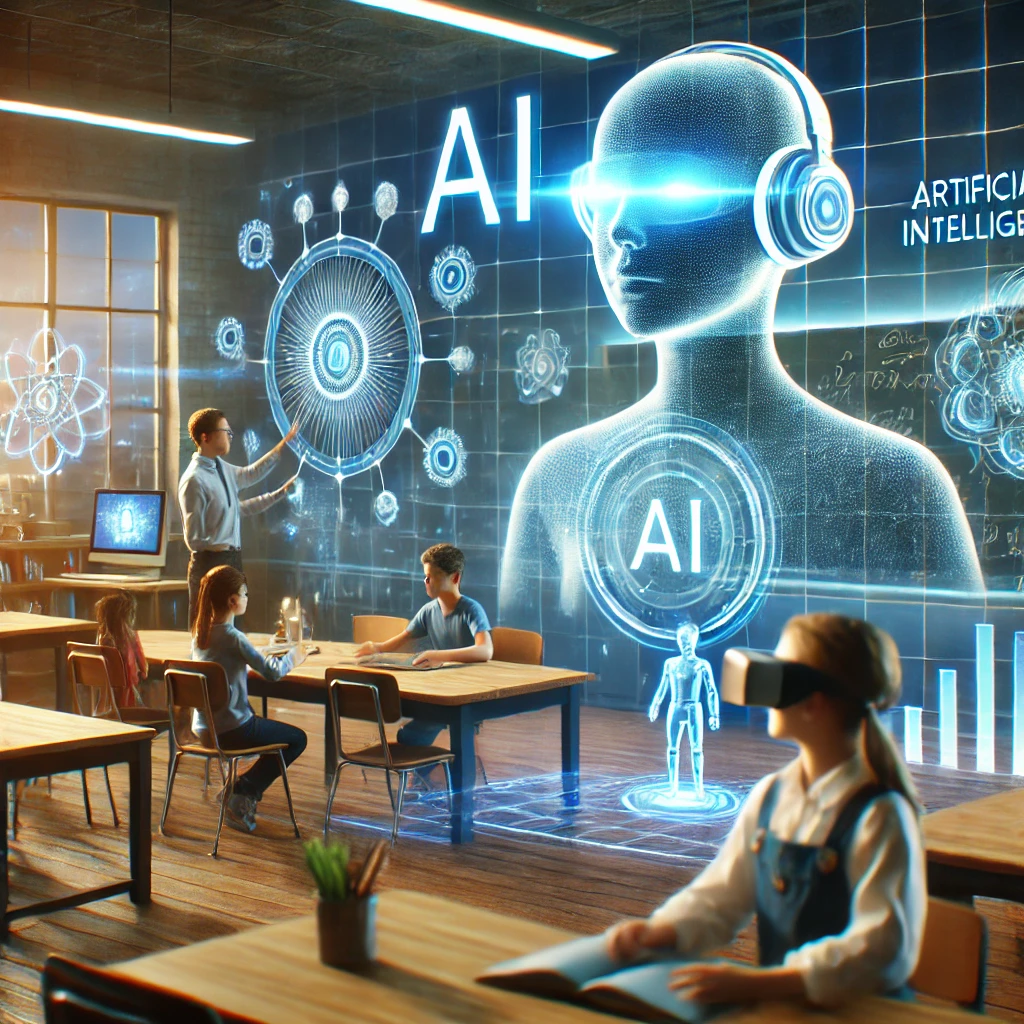AI in Education: Transforming Learning Experiences for the Future

Artificial Intelligence (AI) has rapidly integrated itself into various sectors, with education being one of its most transformative applications. By revolutionizing traditional teaching methods and personalizing learning, AI is redefining the educational landscape. This article delves into how AI is being utilized in education, its benefits, challenges, and future potential.
1. The Rise of AI in Education
AI’s incorporation into education is driven by advancements in machine learning, natural language processing (NLP), and big data analytics. These technologies enable:
- Automated grading systems.
- Adaptive learning platforms.
- Virtual tutors and chatbots for student assistance.
- Enhanced administrative efficiency.
Educational institutions worldwide are adopting AI tools to foster an engaging and inclusive learning environment.
2. Benefits of AI in Education
2.1 Personalized Learning
One of AI’s most significant contributions is tailoring education to individual needs. AI-powered platforms analyze student performance and adapt content accordingly.
- Example: Platforms like DreamBox and Knewton customize lessons based on a student’s strengths and weaknesses.
2.2 Increased Accessibility
AI enables learning opportunities for students with disabilities and those in remote locations.
- Voice Recognition: Helps visually impaired students access digital content.
- Language Translation: Breaks language barriers in multilingual classrooms.
2.3 Enhanced Efficiency for Educators
By automating repetitive tasks such as grading and attendance tracking, AI allows educators to focus more on teaching and student engagement.
- Example: Gradescope uses AI to expedite exam grading.
2.4 Interactive and Engaging Learning
AI-powered tools create immersive learning experiences through gamification and simulations.
- Example: AI-driven VR platforms like zSpace make STEM subjects more engaging.
3. Challenges in Implementing AI in Education
3.1 Data Privacy Concerns
AI relies on vast amounts of student data, raising questions about data security and ethical usage.
- Solution: Implementing robust data protection policies and transparency measures.
3.2 Inequity in Access
Not all schools and students have the resources to adopt AI technologies, potentially widening the digital divide.
- Solution: Governments and organizations must prioritize funding for underprivileged schools.
3.3 Dependence on Technology
Over-reliance on AI tools may reduce critical thinking and problem-solving skills among students.
- Solution: Maintaining a balance between AI-driven and traditional teaching methods.
4. Applications of AI in Education
4.1 Intelligent Tutoring Systems (ITS)
AI-driven ITS provides personalized guidance and real-time feedback to students.
- Example: Carnegie Learning’s AI Tutor helps students grasp complex mathematical concepts.
4.2 Adaptive Learning Platforms
These platforms adjust difficulty levels and content pacing based on individual progress.
- Example: Coursera’s AI tools recommend courses tailored to user preferences and goals.
4.3 Language Learning Assistance
AI applications like Duolingo use NLP to facilitate language acquisition through interactive exercises.
4.4 Administrative Automation
AI simplifies administrative tasks, from scheduling to resource allocation.
- Example: Chatbots like Ivy assist with student inquiries and enrollment processes.
5. Success Stories: AI Transforming Education
5.1 Improving Student Outcomes
- Case Study: Georgia State University implemented an AI-based chatbot that reduced summer melt by over 20%.
5.2 Supporting Teachers
- Case Study: Squirrel AI in China provided real-time analytics to help educators identify struggling students.
5.3 Expanding Global Reach
- Case Study: Khan Academy’s AI features offer free, high-quality education worldwide, ensuring equitable learning opportunities.
6. The Future of AI in Education
6.1 Lifelong Learning
AI platforms will promote continuous education for professionals, helping them stay relevant in their fields.
- Example: LinkedIn Learning integrates AI to suggest courses based on career paths.
6.2 Virtual and Augmented Reality
AI-powered VR and AR technologies will create more immersive and practical learning environments.
- Example: Simulations for medical students to practice surgeries.
6.3 Collaborative Learning Environments
AI tools will enhance group projects by facilitating communication and task allocation.
6.4 AI-Driven Curriculum Development
AI can analyze future job trends and skill demands to design relevant curriculums.
7. Balancing AI and Human Elements in Education
While AI offers unparalleled benefits, it cannot replace the emotional intelligence and empathy of human educators. Combining AI tools with traditional teaching methods ensures a holistic learning experience.
Conclusion
AI is revolutionizing education by making it more accessible, personalized, and efficient. However, addressing challenges like data privacy, accessibility, and ethical concerns is crucial for sustainable implementation. As technology continues to evolve, the synergy between AI and education promises a brighter future for learners worldwide.